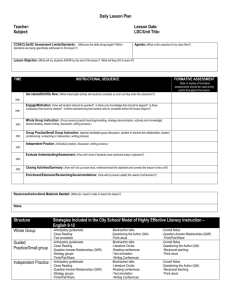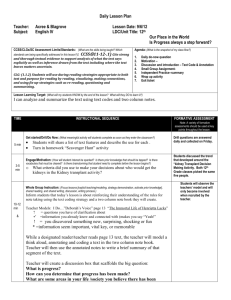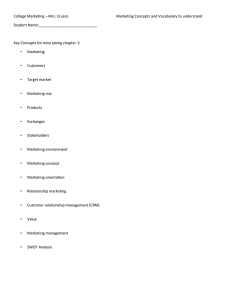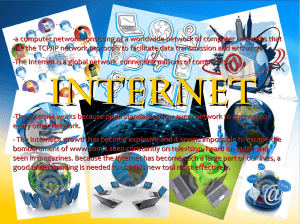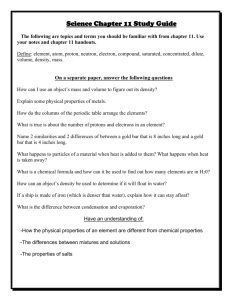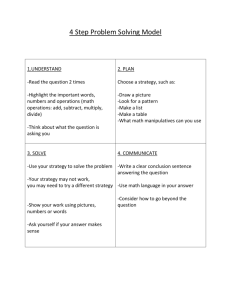Strategy through Information Systems
advertisement
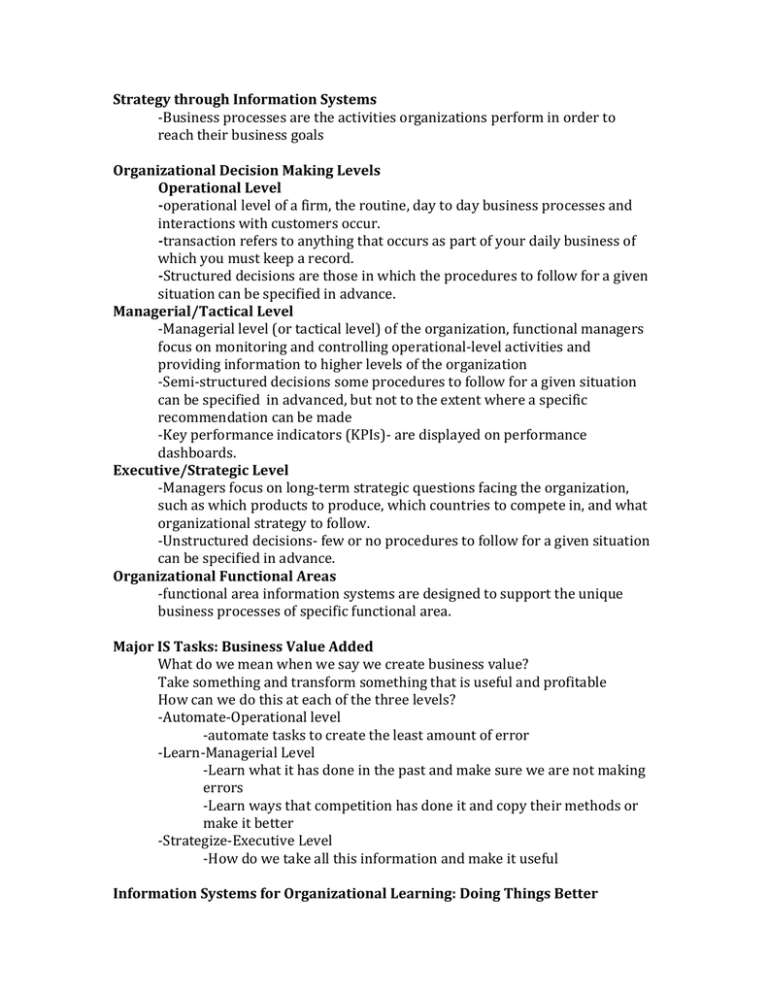
Strategy through Information Systems -Business processes are the activities organizations perform in order to reach their business goals Organizational Decision Making Levels Operational Level -operational level of a firm, the routine, day to day business processes and interactions with customers occur. -transaction refers to anything that occurs as part of your daily business of which you must keep a record. -Structured decisions are those in which the procedures to follow for a given situation can be specified in advance. Managerial/Tactical Level -Managerial level (or tactical level) of the organization, functional managers focus on monitoring and controlling operational-level activities and providing information to higher levels of the organization -Semi-structured decisions some procedures to follow for a given situation can be specified in advanced, but not to the extent where a specific recommendation can be made -Key performance indicators (KPIs)- are displayed on performance dashboards. Executive/Strategic Level -Managers focus on long-term strategic questions facing the organization, such as which products to produce, which countries to compete in, and what organizational strategy to follow. -Unstructured decisions- few or no procedures to follow for a given situation can be specified in advance. Organizational Functional Areas -functional area information systems are designed to support the unique business processes of specific functional area. Major IS Tasks: Business Value Added What do we mean when we say we create business value? Take something and transform something that is useful and profitable How can we do this at each of the three levels? -Automate-Operational level -automate tasks to create the least amount of error -Learn-Managerial Level -Learn what it has done in the past and make sure we are not making errors -Learn ways that competition has done it and copy their methods or make it better -Strategize-Executive Level -How do we take all this information and make it useful Information Systems for Organizational Learning: Doing Things Better -Information systems can track and identify trends and seasonality -Managers can use this to plan staffing levels and cross-training “ Doing Things Smarter -Firms have a competitive strategy -This is how they differentiate themselves from others in the competitive marketplace -Recall Carr, what is the implication of this for how info systems should be used in the organization? -Information Systems should be implemented that support that strategy -Low cost strategy implies information systems to minimize expenses- Classic Defender/ Reactor -High quality strategy implies information systems to support ensuring excellent quality and minimal defects-Analyzer/ s How do I begin to think about the strategy my firm should implement? Competitive environment as a whole, as well as future competition Five Forces Model- Evaluating Business Segments -Buyer Power -Bargaining power of channels -Bargaining power of end users -Reduce prices Increase quality Value added services -ERP reduce costs CRM CAD -Supplier Power- Bargaining power of suppliers -the firm is powerless to the price of suppliers -the potential for substitute products from other industries -the rivalry among competing sellers in your industry -threat of new entrants Sources of Competitive Advantage -Being the first to enter a market (i.e. having a first mover advantage) -Having the best-made product on the market -Delivering superior customer service -Achieving lower costs than rivals -Having a proprietary manufacturing technology, formula, or algorithm -Having shorter lead times in developing an testing new products -Having a well-known brand name and reputation -Giving customers more value for their money Pursuit of Competitive Advantage -What technologies enable an organization -Best-made product -Superior customer service -Lower costs The advent of the digital/information age, has facilitated what business trend International business Strategies in the Digital World -Domestic companies also fee some negative effects brought about by globalization -International business strategy-is used for competing in different global markets -Administrative heritage- the corporate culture that has evolved in the environment of the firm’s home country. International IS Strategies -There are four international business strategies -Home Replication -A locally focused strategy where the firm merely exports products to garner additional sales -Think manufacturing -Strength- No heterogeneity in core competency -Weakness- Local Market conditions are ignored -Global Strategy -centralized organization with standard offerings across markets -Think manufacturing (Caterpillar, Master Lock) -Strength- has tight control of the entire company as well as the knowledge that is generated within the company -Weakness- can not quickly react to local challenges and opportunities -Multi-Domestic Strategy -Decentralized set of business units each of which locally optimize their behavior -Think food service (KFC) -Strength react quickly to local market conditions -Weakness limits the ability to knowledge share and exploit economies of scale -IS is decentralize -Transnational Strategy -Semi-centralized integrated network of firms that work as a cohesive unit -Think of the firms who do everything (GE, UTC) -Strength can garner the benefits of both global and multi domestic through integration -Weakness really hard to manage -This is the integrated global market place. IS make the maestro’s work possible -Review -Enabling organizational strategy -Layers of the organization -Porter’s Puzzle -Competitive Advantage -Globalized Firm Strategy -Four options
